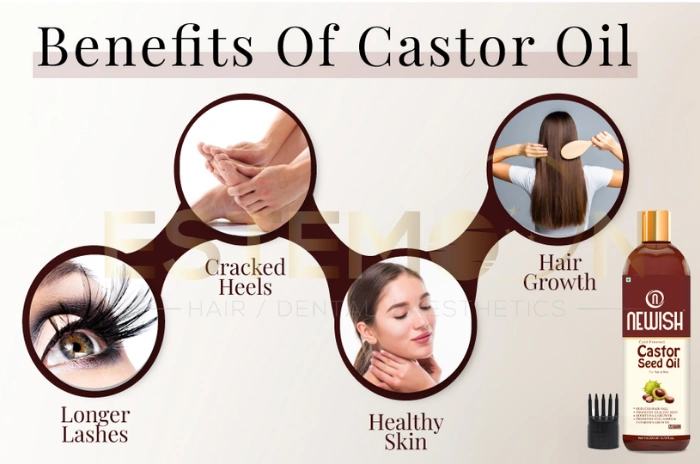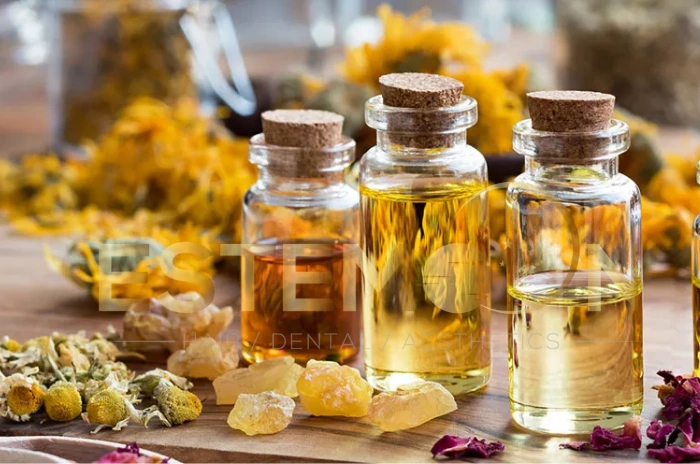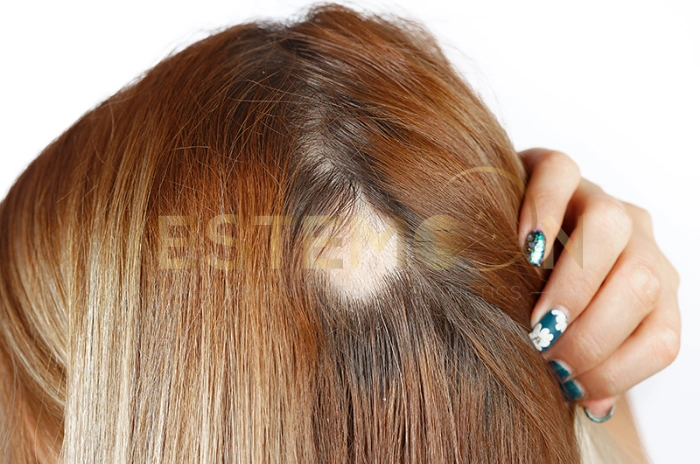Healthy, lustrous hair is often the result of consistent care and the right products. Among the most effective natural oils for hair care, certain oils stand out for their ability to nourish, protect, and transform your hair. Whether you’re dealing with dryness, breakage, or slow growth, incorporating the best hair oils for growth into your routine can make a significant difference.
Hair oils have been used for centuries across different cultures, from ancient Egyptian beauty rituals to traditional Indian hair care practices. Today, science confirms what our ancestors knew: the right oils can penetrate the hair shaft, provide essential nutrients, and create a protective barrier against environmental damage. Understanding which coconut oil for hair benefits work best for your specific needs, or whether jojoba oil vs. coconut oil for hair is the better choice, can help you make informed decisions about your hair care routine.

Why Use Oil on Your Hair?
Natural oils for hair serve multiple purposes beyond simply adding shine. Unlike synthetic products that often contain harsh chemicals, oils work with your hair’s natural structure to provide deep nourishment and protection.
Benefits for Scalp Health
A healthy scalp is the foundation of beautiful hair. Hair oil benefits extend to scalp care by reducing inflammation and creating an environment where hair follicles can thrive. Many oils possess antimicrobial properties that help combat dandruff-causing bacteria and fungi.
Regular scalp treatments with appropriate oils can balance sebum production, preventing both excessive oiliness and dryness. The massaging action during oil application also improves blood circulation to hair follicles, potentially promoting stronger hair growth from the roots.
How Oils Protect and Repair Hair Structure
Hair damage occurs when the protective cuticle layer becomes compromised. Best oil for dry hair varieties work by filling in microscopic gaps in damaged cuticles and creating a protective film around each strand. This process helps prevent moisture loss and reduces the risk of further damage from heat styling, chemical treatments, and environmental factors.
Oils rich in fatty acids can actually penetrate the hair shaft, providing deep conditioning from within. This internal nourishment helps repair existing damage and strengthens hair against future breakage, making oils particularly valuable for those seeking the best oil for fine hair that won’t weigh down delicate strands.
The 6 Best Oils for Hair
1. Coconut Oil
What Coconut Oil is & Key Nutrients
Coconut oil for hair is extracted from mature coconut meat and contains approximately 90% saturated fats, primarily lauric acid. This medium-chain fatty acid has a unique molecular structure that allows it to penetrate hair more effectively than many other oils. Cold-pressed vs. refined oils for hair makes a difference with coconut oil – virgin, cold-pressed varieties retain more beneficial compounds.
Coconut oil also contains vitamin E, vitamin K, and iron, which contribute to its nourishing properties. The oil remains solid at temperatures below 76°F and liquefies when warmed, making it easy to apply when melted.
Benefits by Hair Type
For dry, damaged hair, coconut oil for hair benefits include deep moisturizing and protein-like effects that can temporarily fill in damaged areas of the hair shaft. Those with curly or coarse hair often find coconut oil particularly beneficial for reducing frizz and enhancing curl definition.
However, individuals with fine or low-porosity hair should use coconut oil sparingly, as it can build up and weigh hair down. People with protein-sensitive hair may also find coconut oil too heavy, as it can mimic protein and cause stiffness if overused.
How to Apply & Frequency
Warm a small amount of coconut oil between your palms until it liquefies. Apply from mid-length to ends, avoiding the scalp unless you have very dry skin. For deep conditioning, leave on for 30 minutes to overnight before shampooing. Use once or twice weekly for most hair types, or less frequently for fine hair.
2. Argan Oil
What Argan Oil is & Key Nutrients
Argan oil for hair comes from the kernels of argan trees native to Morocco. This golden oil is rich in vitamin E, essential fatty acids, and antioxidants. It contains high levels of oleic and linoleic acids, which help maintain hair elasticity and shine.
Argan oil also contains squalene, a compound that helps regulate sebum production and provides additional moisturizing benefits. The oil’s lightweight consistency makes it suitable for most hair types without causing heaviness.
Benefits by Hair Type
Argan oil works exceptionally well as the best oil for fine hair because of its lightweight nature. It provides moisture and protection without weighing down delicate strands. For chemically treated or heat-damaged hair, argan oil’s antioxidants help repair free radical damage and restore elasticity.
Those with medium to thick hair can use argan oil as a finishing product to add shine and tame flyaways. Its anti-inflammatory properties also make it suitable for sensitive scalps.
How to Apply & Frequency
Apply 2-3 drops to damp hair, focusing on ends and working upward. Argan oil can be used daily as a leave-in treatment or styling aid. For deeper conditioning, apply generously to dry hair and leave for 20-30 minutes before washing.
3. Jojoba Oil
What Jojoba Oil is & Key Nutrients
Jojoba oil for hair is technically a liquid wax extracted from jojoba plant seeds. Its molecular structure closely mimics human sebum, making it highly compatible with both hair and scalp. Rich in vitamins A, D, and E, plus zinc and copper, jojoba oil provides essential nutrients for hair health.
The oil’s long shelf life and stability make it an excellent base for how to mix oils for hair growth blends. Its non-comedogenic properties mean it won’t clog hair follicles or cause scalp issues.
Benefits by Hair Type
In the jojoba oil vs. coconut oil for hair debate, jojoba often wins for those with oily or acne-prone scalps. Its sebum-like properties help regulate natural oil production rather than adding excess weight. Fine hair benefits from jojoba’s lightweight feel, while dry hair receives deep moisturizing without greasiness.
Jojoba oil’s anti-inflammatory properties make it ideal for those with scalp sensitivities or conditions like seborrheic dermatitis.
How to Apply & Frequency
Jojoba oil can be applied to both scalp and hair. For scalp treatment, massage 5-10 drops into clean scalp before bed. For hair conditioning, apply to damp ends and mid-lengths. Can be used 2-3 times weekly or as needed.

4. Castor Oil
What Castor Oil is & Key Nutrients
Castor oil for hair growth is derived from castor beans and contains ricinoleic acid, a unique fatty acid with anti-inflammatory and antimicrobial properties. This thick, viscous oil also contains omega-6 fatty acids, vitamin E, and proteins that support hair health.
The oil’s consistency is much thicker than other hair oils, requiring dilution with lighter oils for easier application. Cold-pressed, hexane-free castor oil provides the highest quality and safety.
Benefits by Hair Type
Castor oil is particularly beneficial for those experiencing hair thinning or slow growth. Its ricinoleic acid content may improve circulation to hair follicles, potentially promoting growth. The thick consistency makes it excellent for very dry, damaged, or chemically processed hair.
Those with fine hair should dilute castor oil with lighter oils like jojoba or argan to prevent weighing hair down. The oil’s antimicrobial properties also benefit those with scalp issues.
How to Apply & Frequency
Due to its thickness, mix castor oil with a lighter carrier oil in a 1:1 or 1:2 ratio. Apply to scalp and hair, focusing on areas of concern. Leave on for at least 30 minutes or overnight before washing with a clarifying shampoo. Use weekly for best results.
5. Avocado Oil
What Avocado Oil is & Key Nutrients
Avocado oil for hair is pressed from avocado flesh and contains monounsaturated fats, vitamins A, D, and E, plus biotin and potassium. Its molecular size allows for good penetration into hair shafts, providing deep conditioning benefits.
The oil’s high oleic acid content helps it penetrate hair better than many other oils. It also contains lecithin, which acts as a natural emulsifier and conditioning agent.
Benefits by Hair Type
Avocado oil excels as the best oil for dry hair due to its rich, nourishing properties. It works particularly well for thick, coarse, or curly hair that needs intense moisture. The oil’s proteins can help strengthen damaged hair and reduce breakage.
For color-treated hair, avocado oil’s antioxidants help protect against fade and environmental damage. Its heavy consistency may be too much for fine hair unless used sparingly.
How to Apply & Frequency
Warm avocado oil slightly and apply from mid-length to ends on damp hair. For deep conditioning, apply to dry hair and leave for 20-45 minutes before shampooing. Use weekly or bi-weekly depending on hair’s moisture needs.
6. Almond Oil
What Almond Oil is & Key Nutrients
Almond oil for hair comes in two varieties: sweet almond oil (most common for hair care) and bitter almond oil. Sweet almond oil contains vitamin E, magnesium, and fatty acids that nourish hair and scalp. It’s lightweight and easily absorbed, making it suitable for most hair types.
The oil’s emollient properties help smooth hair cuticles and reduce frizz. Its vitamin E content provides antioxidant protection against environmental damage.
Benefits by Hair Type
Almond oil serves as an excellent oil for frizzy hair due to its smoothing properties. It works well for all hair types but is particularly beneficial for those with normal to slightly dry hair. The lightweight consistency won’t overwhelm fine hair, while still providing adequate moisture for thicker textures.
Regular use can help improve hair’s overall appearance and manageability while reducing static and flyaways.
How to Apply & Frequency
Apply a few drops to damp hair, focusing on ends and frizz-prone areas. Can be used daily as a leave-in treatment or weekly as a pre-shampoo treatment. For scalp massage, use 5-10 drops and massage gently before washing.

Benefits of Using Hair Oils
Promotes Hair Growth
Regular use of appropriate best hair oils for growth can create optimal conditions for healthy hair development. Oils improve scalp circulation through massage, provide essential nutrients to hair follicles, and create a healthy environment for growth.
How to use hair oils for growth involves consistent application, proper scalp massage techniques, and choosing oils rich in growth-promoting compounds like ricinoleic acid (castor oil) or essential fatty acids (most plant oils).
Reduces Breakage and Split Ends
Hair oils create a protective barrier that helps prevent damage from mechanical stress, heat styling, and environmental factors. Regular oil treatments can improve hair elasticity, making strands less likely to snap under tension.
The conditioning effects of oils also help seal split ends temporarily, preventing them from traveling up the hair shaft and causing more damage.
Soothes Dry Scalp and Dandruff
Many natural oils for hair possess anti-inflammatory and antimicrobial properties that help address scalp issues. Regular oil treatments can balance scalp moisture, reduce flaking, and calm irritation.
Oils like tea tree, coconut, and jojoba have specific properties that help combat dandruff-causing organisms while nourishing the scalp.
How to Use Hair Oils for Best Results
Pre-Wash Treatments
Apply chosen oil to dry hair 30 minutes to several hours before shampooing. This allows time for deep penetration and conditioning. Focus on ends and damaged areas, using less oil near the roots to avoid greasiness.
Pre-wash treatments are particularly effective for very dry or damaged hair that needs intensive repair.
Overnight Hair Masks
For maximum conditioning, apply oil to hair before bed and wash out in the morning. Cover with a silk or satin scarf to protect pillowcases and prevent oil transfer.
Overnight treatments work best with lighter oils like jojoba or argan, as heavier oils may be difficult to wash out completely.
Leave-In Conditioner Substitute
Small amounts of lightweight oils can replace traditional leave-in conditioners. Apply 1-2 drops to damp hair ends for ongoing protection and moisture.
This method works particularly well with argan, jojoba, or almond oils that won’t weigh hair down.
Scalp Massage Techniques
Warm oil slightly and apply to scalp in sections. Use fingertips to massage in circular motions for 5-10 minutes, promoting circulation and relaxation.
Focus on areas where you want to encourage growth or address specific concerns like dryness or thinning.
Common Mistakes to Avoid When Using Hair Oils
Using Too Much Oil
Applying excessive amounts of oil can lead to greasy, weighed-down hair that’s difficult to style. Start with small amounts and gradually increase if needed.
Remember that a little oil goes a long way, especially with concentrated oils like castor or avocado oil.
Not Washing Out Properly
Heavy oils require thorough cleansing to prevent buildup. Use a clarifying shampoo occasionally, and consider double-shampooing after intensive oil treatments.
Buildup can make hair appear dull and lifeless, counteracting the benefits of oil treatments.
Choosing the Wrong Oil for Your Hair Type
Different hair types respond better to specific oils. Fine hair needs lighter oils, while thick, dry hair can handle heavier formulations.
Consider your hair’s porosity, texture, and specific concerns when selecting oils for your routine.
Expert Tips & DIY Blends
Essential oils like rosemary, peppermint, and tea tree can be added to carrier oils for scalp stimulation and additional benefits. Use 2-3 drops per tablespoon of carrier oil to avoid irritation.
Traditional Indian hair care often combines amla oil with curry leaves for growth promotion. These ingredients can be infused into carrier oils like coconut or sesame oil.
Hair Oil Comparison Chart
| Oil Type | Best For | Hair Type | Key Benefits | Application Frequency |
|---|---|---|---|---|
| Coconut Oil | Deep conditioning, frizz control | Thick, curly, damaged hair | Penetrates hair shaft, reduces protein loss | 1-2 times weekly |
| Argan Oil | Daily use, heat protection | Fine to medium hair | Lightweight, antioxidant-rich, adds shine | Daily or as needed |
| Jojoba Oil | Scalp health, oil regulation | All hair types, oily scalps | Mimics natural sebum, non-comedogenic | 2-3 times weekly |
| Castor Oil | Hair growth, thinning areas | All types (dilute for fine hair) | Promotes circulation, thick consistency | Weekly |
| Avocado Oil | Intensive moisture, repair | Dry, thick, color-treated hair | Rich in vitamins, deep penetration | Weekly |
| Almond Oil | Frizz control, daily use | Normal to slightly dry hair | Lightweight, smoothing, reduces static | Daily or bi-weekly |
How to mix oils for hair growth: Combine castor oil (50%) with jojoba oil (40%) and add rosemary essential oil (10%) for a growth-promoting blend. This combination provides heavy conditioning from castor oil, lightweight moisture from jojoba, and circulation benefits from rosemary.
Another effective blend mixes coconut oil (60%) with argan oil (35%) and peppermint essential oil (5%) for a refreshing treatment that conditions while stimulating the scalp.
FAQs About The 6 Best Oils for Healthy Hair and How to Use Them Effectively
Why should I use oil on my hair?
Hair oils provide deep conditioning, protect against damage, improve scalp health, and can promote stronger, healthier hair growth.
What are some of the best oils for promoting hair growth?
Castor oil, rosemary oil, jojoba oil, and coconut oil are among the most effective for promoting healthy hair growth.
How do I know which hair oil is right for my hair type?
Fine hair benefits from lightweight oils like argan or jojoba, while thick, dry hair can handle heavier oils like coconut or avocado.
What's the best way to apply hair oils for maximum benefit?
Apply to damp hair from mid-length to ends, massage into scalp when needed, and allow adequate time for absorption before washing.
Can using too much hair oil make my hair greasy or weigh it down?
Yes, using excessive amounts can cause buildup and greasiness, so start with small amounts and adjust based on your hair’s response.
How often should I oil my hair?
Most hair types benefit from oil treatments 1-3 times per week, but frequency depends on your hair’s condition and specific needs.
Do hair oils help with dandruff or a dry, itchy scalp?
Yes, many oils have antimicrobial and anti-inflammatory properties that can help soothe scalp irritation and reduce dandruff.
Can I mix different oils together for a custom blend?
Absolutely, combining oils allows you to create customized treatments that address multiple hair concerns simultaneously.



